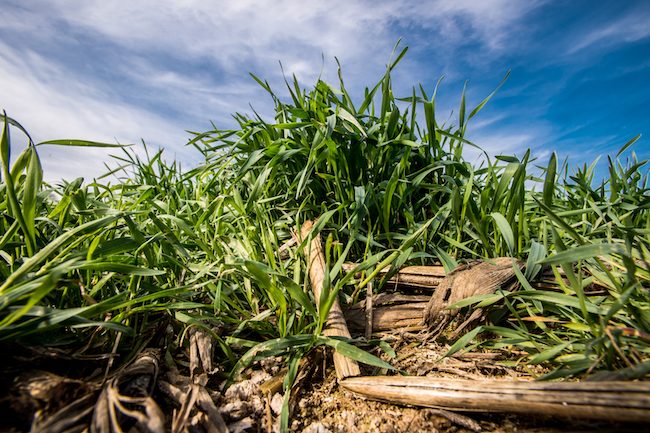Flooding may have officially ruined the corn-growing season for many South Dakota farmers as agriculture experts urge producers to consider skipping the cash crop altogether.
“Economically, it may be best to plant corn for forage at this point,” said Sara Bauder, an agronomy field specialist for SDSU Extension based in Mitchell.
Late snow storms and consistent rainfall has left standing water in fields throughout southeastern and south-central South Dakota.
Bauder said some farmers in those areas started planting in June, and there may still be time to plant soybeans, alternative grains or a shortened corn variety. But beyond that, Bauder offered another suggestion: cover crops.
“If producers do not make prevented planting deadlines and choose not to plant intended cash crops, cover crops may be an excellent alternative,” Bauder said.
Refusing to plant anything could result in fallow syndrome, according to a written statement from SDSU Extension Soils Field Specialist Anthony Bly. Fallow syndrome refers to a phosphorus deficiency, which could negatively impact next year’s crop.
Instead of letting fields go fallow, Bauder said cover crops benefit the soil, which can boost the big economic picture by benefiting yields down the road. SDSU Extension is currently developing three-year studies to test how cover crops affect nutrients, economics and weed control.
“At a minimum it’s best to keep the soil covered with a cover crop. Adding diversity to you cover crop mix is even better,” Bauder said.
While time may be running out to plant cash crops, Bauder said there is plenty of time to plant warm-season cover crops. Some varieties don’t need to be planted until July.
Plus, some cover crops mature more quickly, or they require less growing time if farmers plan to simply use them for forage. And those cover crops could be used to make revenue this year.
“Even for producers who may not own livestock, a forage crop can still hold economic potential. Harvesting forage or leasing grazing acres to neighbors who own livestock provides a way to create revenue on fields that may have otherwise been fallow or weedy this year,” Bauder said.
At the end of the season, SDSU Extension suggests grazing only half the crop so there is still cover to protect the soil. If not using for forage, Bauder said it’s best to leave them over the winter and terminate prior to spring planting.
Getting the most from insurance
Farmers aren't the only ones affected by the late planting season. Melanie Parsons, owner and agent with Parsons’ Insurance Agency in Viborg, said many farmers will be eligible for prevented planting payments this year.
“Much of the cropland remains too wet as of today. There will be substantial losses, both in the number of claims and in dollars,” Parsons said.
But despite the potentially high number of claims, Parsons said she and other crop insurance companies aren’t worried about the payouts.
Parsons said the government shares the risk on Multi-Peril Crop Insurance (MCPI) policies, which includes prevented planting insurance.
“This (MCPI) is the product most frequently purchased by farmers because it includes protection for many types of losses,” Parsons said.
Insurance companies manage their portion of the risk with reinsurance, as well.
Farmers relying on prevented planting insurance need to follow a few rules to get the full benefit, however. They can follow Bauder’s advice and plant cover crops, but there are a few dates and restrictions to keep in mind to receive 100 percent payout, as listed by SDSU Extension:
Cover crops must be planted after the final plant date but may be planted during the late plant period.
Grazing or haying must not take place until Nov. 1.
Follow crop insurance specifications for seeding rate, species and deadlines.
Both SDSU Extension and Parsons urged farmers to talk to their insurance agents in order to get a maximum payout.
“Every farmer has different unit structures, guarantees, coverage levels, options, prevented planting eligibility and premiums, so it is important that he bases his decisions on his specific policy and coverage,” Parsons said.





Post a comment
Report Abusive Comment